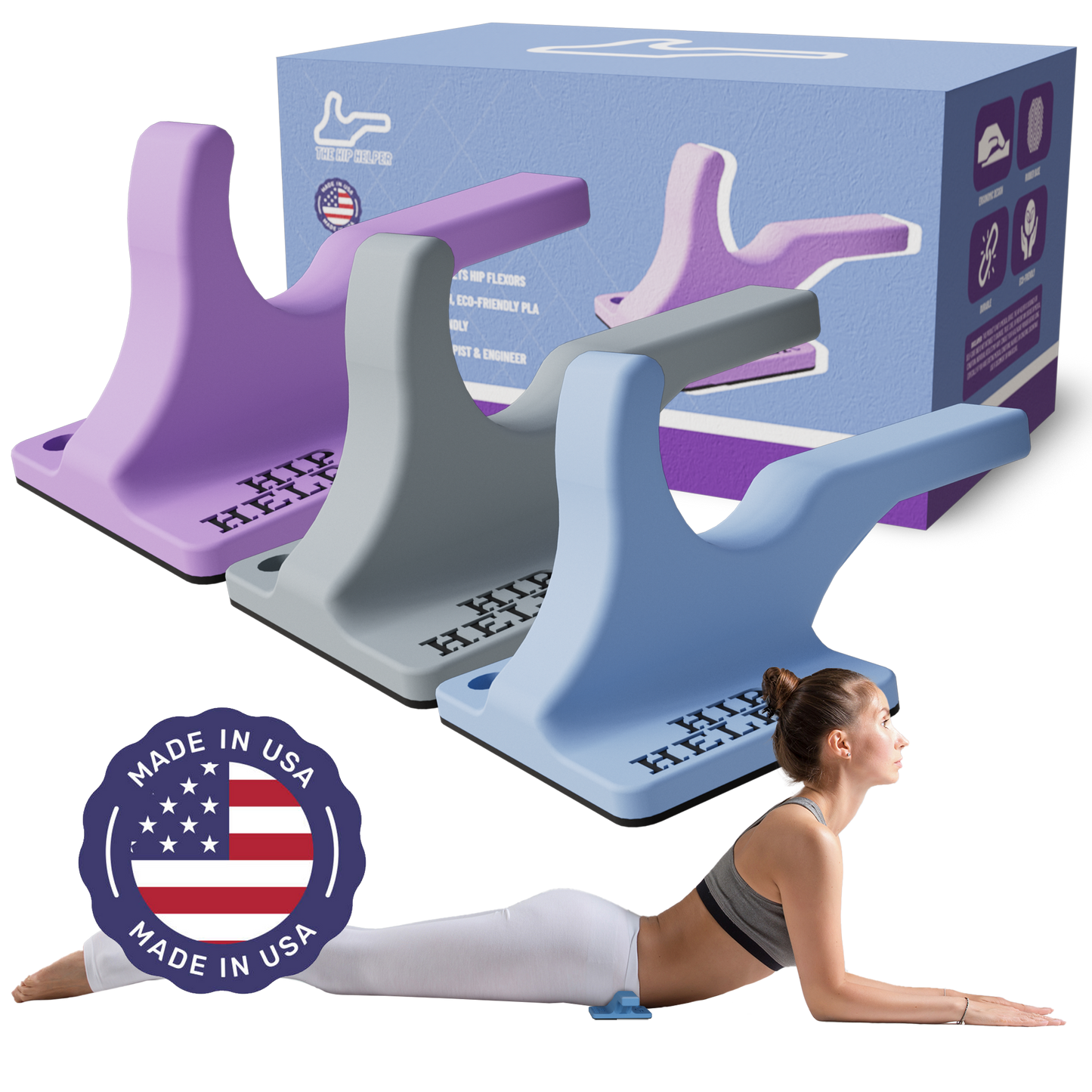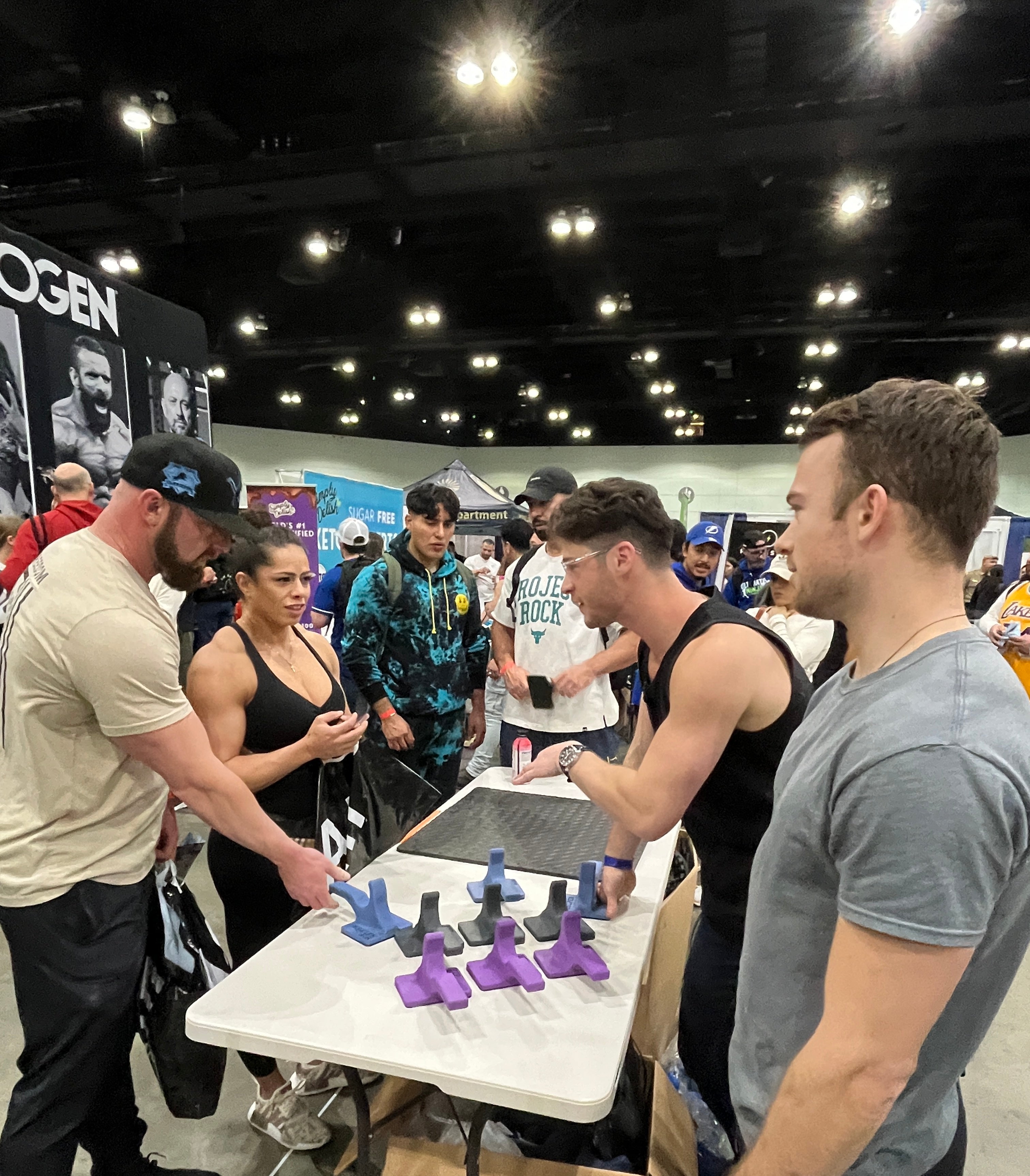The Hip Helper
The Hip Helper
Couldn't load pickup availability
The Hip Helper™ is a patent-pending massage device that targets the psoas and ilicaus muscles.
Psoas tightness is associated with lower back pain, sciatica, poor hip mobility, and tension throughout the body.
The tool is made from PLA, a plant-based, skin-safe material derived from cornstarch and carbon fiber. A polyurethane base prevents damage to floors and walls during use.
Target key acupressure points on the body to decrease and stop pain, speed up recovery, and release trauma stored in our muscles and fascia.
Dimensions
Dimensions
Overall dimensions: 7in x 5in x 5in / 180mm x 130mm x 130mm
Weight: 5.8oz / 164g
Maximum load on the tool: 300 lbs (136kg)
What's Included
What's Included
- The Hip Helper
- Quick start guide & instructions
- Guaranteed satisfaction















L.A. Fitness Expo
Articles, Research, and Studies
Article by Wellness Professionals Inc
This article explains how the psoas muscle affects acute and chronic lower back pain. A tight or contracted psoas muscle can pull on the lumbar spine, leading to misalignment and disc degeneration. The article highlights the importance of a strong and balanced psoas muscle for spinal stability and posture and recommends specific stretches/exercises to alleviate tightness and strengthen the muscle.
Article: "Learning How to Unlock Tissue Memory" by Nicole Cutler
This article explores how trauma is stored in the body's tissues, particularly muscles and fascia. It explains that trauma can disrupt physical and emotional health, and releasing this stored trauma requires reconnecting the brain with affected body areas. Techniques like myofascial release (the Hip Helper's method of release) are effective in unlocking these memories and promoting healing.
Study on Psoas Tightness and Related Issues
This study, published in the National Center for Biotechnology Information (NCBI), investigates the implications of psoas tightness on various health issues. It emphasizes that psoas tightness can contribute to chronic back pain, reduced mobility, and other musculoskeletal problems. The research highlights the role of the psoas in maintaining posture and its potential to influence conditions like sciatica and hip pain when tight or dysfunctional.
Study: "Low Back Pain with Psoas Tightness" by Trevor Northagen
This study examines how psoas muscle tightness contributes to low back pain (LBP). The case of a 66-year-old woman shows that addressing psoas tightness with specific exercises and treatments can significantly reduce pain and improve function, highlighting the psoas muscle's role in back pain.
Page 7 points out that psoas tightness was possibly caused by a back injury, and the psoas was tightening, or "guarding", to protect the spine. Without releasing and strengthening the psoas, this only leads to further dysfunction.
Article: Stretching alone will not release a tight psoas
This article links psoas tightness with lower back pain and a host of other issues.
Study: Psoas Tightness Harms Digestion And Organ Functions
This study, published in the National Library of Medicine (NIH) finds a strong correlation of psoas muscle tension with digestion issues (described as "functional gastro-intestinal disorders"), such as abdominal pain and constipation. Interestingly, the left psoas was found to have more tension than the right.
A theory is also presented that psoas tightness causes irritation of the gut and nearby sympathetic nerves, creating a "fight or flight" response and subsequently a source of anxiety.
We've noticed that...
...so many people have tight hips.
This leads a cascade of postural issues.
We've created a tool to help reverse these problems even if they've become chronic.
We guarantee the Hip Helper will make a difference in your life or you get your money back.
There is a 60-day satisfaction guarantee and a 1-year warranty against defects.
We hope to get the Hip Helper to as many people as possible.
Feel the difference when your muscles no longer work against you.








